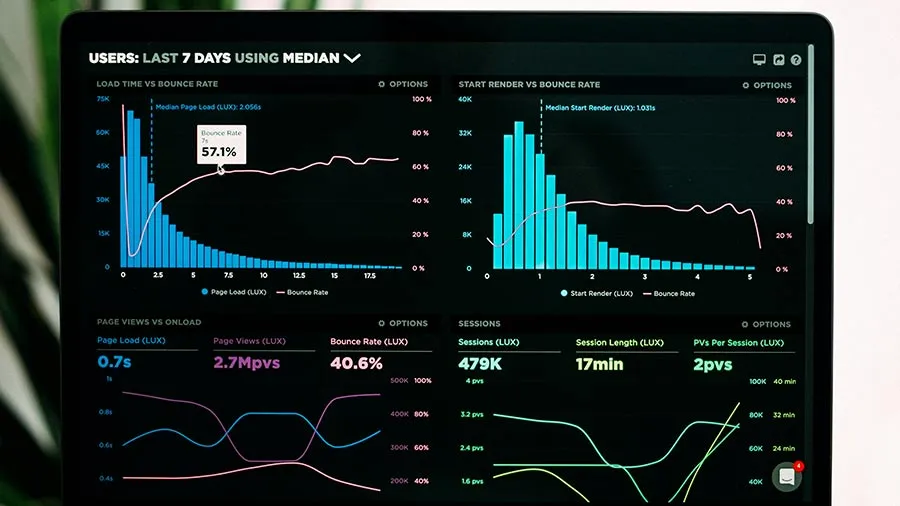Landing pages are often the first impression of your brand, and they can make or break your lead generation efforts. A well-optimized landing page doesn’t just look good; it drives action. In today’s competitive digital landscape, where user attention is fleeting and bounce rates are high, fine-tuning your landing pages is essential. Waiting until conversions drop means reacting too late. Instead, proactive optimization ensures consistent performance. In this article, we’ll walk you through our most effective landing page optimization best practices to help you drive faster, more reliable conversions from your target audience.
What is Landing Page Optimization?
Landing Page Optimization (LPO) is the process of enhancing key elements of a landing page or website page, such as headlines, copy, design, forms, and calls-to-action, to boost conversion rates and maximize return on investment (ROI). Unlike general website optimization, LPO focuses specifically on standalone landing pages created for targeted awareness campaigns like paid ads, email promotions, or events.
LPO aims to make each visitor’s experience more relevant and persuasive, guiding them toward a desired action, whether that’s signing up, downloading a resource, or making a purchase. It relies on data-driven techniques such as A/B testing and analytics to evaluate what works and what doesn’t, rather than making changes based on assumptions. Landing page content optimization is often considered a subset of Conversion Rate Optimization (CRO), but it focuses on individual pages that are critical for campaign success. With advanced tools, including AI and personalization, marketers can now tailor landing pages in real time for even better results.
Why Should You Prioritize Landing Page Optimization?
Landing page optimization (LPO) is essential for improving user experience, boosting conversions, and maximizing your digital marketing ROI. As one of the first touchpoints a visitor may have with your brand building, a landing page must be fast, focused, and frictionless.
By applying best practices, clear CTAs, relevant messaging, fast load times, and user-friendly design, you guide visitors toward key actions like signing up, booking a demo, or making a purchase. This not only drives higher engagement but also significantly improves conversion rates. Optimized landing pages reduce customer acquisition costs (CAC) by making your ad spend more effective and helping each click go further. In fact, optimized pages can deliver up to 160% higher conversions compared to generic tools like pop-ups.
Effective LPO not only enhances user satisfaction but also improves overall campaign performance by increasing conversion rates and reducing CAC. Whether your goal is to drive demo requests, free trials, webinar sign-ups, or purchases, optimized landing pages make your marketing spend go further. They lower the cost-per-click (CPC) and maximize ROI from paid marketing campaigns.
How to Begin Optimizing Your Landing Page?
Here are some key steps to help you kick-start your landing page optimization strategy:
Understand Your Target Persona
Start by deeply researching your target audience. Know their challenges, goals, and the language they use. Build personas that reflect their needs and tailor your page content accordingly. Whether you’re creating landing pages or leveraging content syndication to expand reach, your messaging should communicate your value proposition and guide visitors toward a meaningful next step based on what matters most to them.
Define KPIs and Set Goals
Before testing or optimizing anything, identify the key metrics that will define success, such as conversion rate, bounce rate, and form completion. Align these KPIs with your campaign goals and ensure they reflect the customer journey stage. Establish benchmarks early so you can evaluate performance accurately and make informed decisions using the right landing page optimization tools.
Map to the Buyer Journey
Tailor your landing page experience based on where users are in the buyer journey. Early-stage visitors might need more education, while later-stage leads may be ready for a demo or trial. Use progressive forms or personalized CTAs to minimize friction and capture just enough information based on their readiness to convert.
Analyze Competitor Pages
Look at how competitors structure their landing pages, offers, and CTAs. Use this insight to benchmark industry standards and identify opportunities to stand out. Pay attention to visual hierarchy, copy tone, and conversion flow. This helps you create a differentiated landing page that appeals more directly to your ideal customer.
Embrace Continuous Testing
Landing page optimization tips often emphasize that it’s not a one-and-done process. Use A/B testing, heatmaps, and session recordings, some of the most effective landing page optimization tools, to continuously improve. Test headlines, CTAs, colors, form fields, and layout. Form clear hypotheses and prioritize tests based on potential impact. This iterative approach helps refine the page experience and boost conversion rates over time.
Landing Page Optimization Best Practices
Best practices of landing page optimization in B2B marketing focus on identifying and eliminating friction points in design, content, or functionality to boost conversions. One of the most effective best practices is simplifying the page, limiting actions, reducing form fields, and removing distracting navigation elements. A clean layout with a clear CTA and plenty of white space can significantly increase conversion rates. Also, minimizing page load time is critical; pages loading in 0–2 seconds perform best. Marketers should work with developers to optimize load speed by compressing images, reducing redirects, and using CDNs.
Equally important is delivering a clear, compelling value proposition. Headlines and CTA text should match your audience’s language and align with the ad copy or traffic source to maintain message continuity. Incorporating social proof like customer logos or testimonials adds trust, even if the impact is modest. Offering something of value, like a lead magnet, increases the likelihood of users sharing their information. Optimize landing page SEO by making sure the content generation is valuable, visible to search engines, and not hidden behind gates, especially for organic traffic.
Success Stories: Landing Page Optimization Examples
Slack
Slack’s landing page showcases its special offers and benefits in the headline and supporting text, complemented by visuals that demonstrate the tool in action. It features a more direct CTA promoting a 50% discount and includes trust badges for credibility. The page also strategically compares its free and Pro plans to drive conversions to paid subscriptions.
Salesforce
Salesforce’s landing page effectively prompts visitors to sign up for a demo by detailing its contents in a bulleted format, ensuring easy readability. This clear and concise presentation helps users understand what they can expect from the demo, encouraging them to take the next step.
HubSpot
HubSpot’s landing page is simple but strategic. Instead of overloading users with all its use cases, it segments visitors by directing them to personalized demos based on their needs. This streamlined approach makes navigation intuitive and helps qualify leads from the start. It’s a brilliant use of minimal design to create maximum relevance. Short, focused copy and clear CTAs make it effective for B2B decision-makers.
Conclusion
In the B2B space, where every click counts, well-optimized pages reduce friction, enhance relevance, and turn visitors into leads. By focusing on clarity, personalization, strategic CTAs, and ongoing testing, marketers can significantly improve conversion rates and ROI. As we’ve seen from standout examples like Slack, Salesforce, and HubSpot, success comes from aligning messaging with audience intent and continuously refining performance. Start optimizing with intent, measure what matters, and let your landing pages become your highest-performing digital assets.




